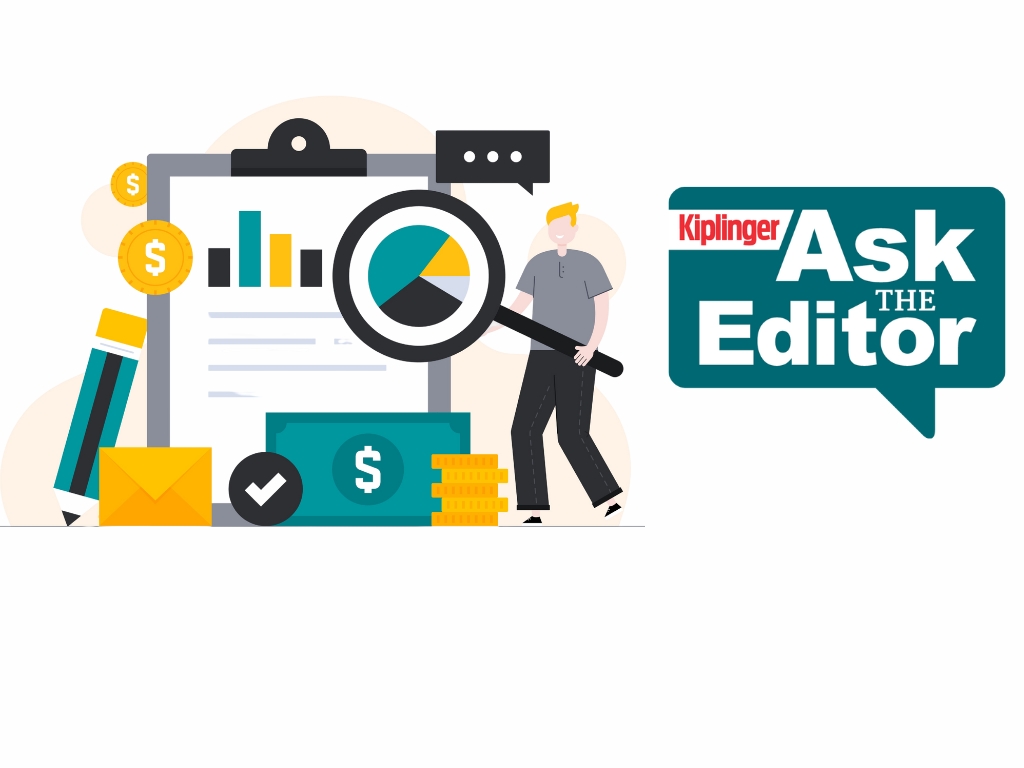Could Bitcoin Replace Gold as the New Safe Haven?
A look back through gold’s history reveals some interesting patterns that could point to what may come next. However, no matter what the future holds, diversification is never a bad idea.

A growing number of people believe Bitcoin could soon replace gold as a safe haven against a depreciating dollar. This, of course, is just speculation, but it is curious to see the exuberance of people regarding Bitcoin.
Aside from the fact that there are a multitude of digital coins (assets), what’s unique about Bitcoin is the fact that its supply is truly fixed. Only 21 million bitcoins will ever be produced. So, considering there are an estimated 47 million millionaires in the world, if each of them wanted just one bitcoin, they couldn’t all acquire one. These supply limitations make Bitcoin bullish.
Gold on the other hand, has been a means of storing wealth for 5,000 years and is a real physical asset. It has always had value in times of geopolitical uncertainty and has many commercial uses. It is inert, making it for the ages, and with mining declining and demand on the rise, we can only assume that prices would increase.

Sign up for Kiplinger’s Free E-Newsletters
Profit and prosper with the best of expert advice on investing, taxes, retirement, personal finance and more - straight to your e-mail.
Profit and prosper with the best of expert advice - straight to your e-mail.
Whether you lean digital or physical, at the core of the debate is a universal distrust of government, and rightfully so, in my opinion. We have seen governments spend and print money at levels so outside of the lanes of being responsible that all we can do is observe and wait to see what happens next.
It is maddening as we watch currencies around the world collapse and regimes fail, it only fuels the appetite for finding ways to store wealth outside of governments’ grips. You have to ask yourself, what is the tipping point?
A History of Gold’s Value Comes Full Circle
When it comes to gold, we only need to look at history to know its viability, but aside from the historical price of gold, the historical events that influenced those prices are where our focus needs to be as we see things beginning to come full circle.
Gold has a very long history ,but we will pick up with the signing of the Federal Reserve Act in 1913. At the time, the country was facing a money supply shortage at the local bank level, and the idea of centralizing the banking system seemed the answer for controlling the elasticity of the money supply.
Then in 1934 the government was running short on money. So, to increase the supply at the Federal Reserve, they raised the spot price of gold by 69% to $35 per ounce. (It is important to note here that the dollar was backed by the gold standard at the time and in order to have more money, the price of gold would have to be higher.) It wasn’t the printing we see today, but it shows the government’s ability to manipulate the currency.
I wrote about something similar the Romans did in my book, Common Sense. Caesar Augustus trimmed the edges of the gold coins to harvest the gold in order to create a new set of coins. The result was a smaller coin with less gold but more coins to circulate. Well, we know how that turned out.
Stagnation, Then Inflation
Jumping to 1964, we see the Dow Jones average was around 800, and 16 year later was still hovering around 800. The reasons for the flat line were many: the Vietnam War, a heavy tax burden, rampant inflation and the lingering possibilities of a nuclear war between the Soviet Union and the United States. The convergence of all these things was preventing the economy from improving, and the markets remained stagnant.
In 1971, the government found itself with yet another money supply shortage, and their answer was to rid themselves of the one thing holding them back: the gold standard. So, the government debased our currency from gold and converted it to a fiat currency. This allowed what we refer to today as the ability to print money without anything backing the stated value other than the government’s creditworthiness.
After this conversion to a fiat currency, gold began a steady climb in value as the dollar began depreciating, reaching an average price of $614 in 1980, up from $35 in less than a decade.
Hot Economy Hammers Gold
Then came the Economic Recovery Tax Act of 1981, which began an explosion of wealth that stretched through the 1990s. The act reduced taxes and regulations. Later in the decade came the fall of the communist Soviet Union, which sparked optimism about the future and provided relief from the prospects of a nuclear threat or communist takeover. With a more optimistic view of the economy, as demand shrank, we saw gold prices decline, bottoming out in 2001 at an average price of $271.
Then in the early 2000s we saw a shift back to a loss of confidence when a series of events turned the tides and resurfaced insecurities of the past. The tech bubble burst, the 9/11 terrorist attack, and the mortgage meltdown all occurred within an eight-year period. The government once again turned on the printing presses, and free money began to circulate in an unprecedented fashion and hasn’t really stopped since.
After the worst of 2008, the markets and our economy began clawing their way out of a gaping hole until the Tax Cut and Jobs Act of 2017. From 2017 though 2021 (including COVID in 2020) the markets rose by 56% as a result of the tax cuts and deregulation, allowing businesses to expand and hire more employees.
Back to the Future
Fast forward to today, we see the government aggressively spending money, and if we look at other countries that have traveled the road we are on (not unlike the Romans), we see that it ends badly.
We must also be mindful of the fact that there is a serious rise in global tensions between China and the United States, and Russia and the United States that have an eerie resemblance to the Cold War.
I mentioned earlier that we were coming full circle. What we have learned through this history lesson is that the government’s appetite for spending money is insatiable and has proven to erode our currency to what end? This leaves the future of the markets, our currency and the future of our country uncertain as we venture deeper and deeper into unchartered waters.
With All This in Mind, What about Bitcoin vs. Gold?
Which brings me back to the question, will Bitcoin replace gold as the new safe haven? Lacking a crystal ball, I don't know if this will happen, and neither does anyone else. Quite frankly, I am not even sure if this is the right question to ask, but it is a lingering question and one that cannot be answered without understanding the history of our currency.
With all this uncertainty around us, we are certainty seeing a flight to safety, but if you are a diversified investor, perhaps you should own both gold and Bitcoin instead of debating about which is better. By focusing on things you can control, such as your allocation, you can participate if there are gains and limit your exposure if something goes south. Hence, diversification.
Proponents believe that Bitcoin and its blockchain might very well rewire the entire global financial network based on the fact that bitcoin and blockchain, along with smart contracts and NFTs, are the most revolutionary technological innovations since the internet itself. With that, it is safe to consider that it stands alone as its own asset class separate from gold.
But if one is steadfast in comparing the digital asset to gold, you could say that Bitcoin is the more convenient of the two to own, being that it is accessible via the internet at any time. However, as a physical asset, gold can be held securely in hand free of internet outages or a hacking threat.
I will conclude with this: Gold has always been a storage of wealth, and Bitcoin may very well be that in the future but is too volatile to replace gold at this time. Instead look at Bitcoin as the technology of tomorrow, knowing that tomorrow is closer than you think.
One of the most important things to consider before buying gold, Bitcoin or other investments is knowing your risk tolerance. Many people are unsure about how to articulate their feelings about risk and will often resort to using ambiguous words to describe their tolerance. That doesn’t have to be the case for you. You can have a precise score to describe your risk tolerance for free by taking my risk score quiz here.
Disclaimer
Sources:
Disclaimer
https://www.hoover.org/research/ten-causes-reagan-boom-1982-1997
Disclaimer
https://www.washingtonpost.com/news/wonk/wp/2013/12/21/the-federal-reserve-was-created-100-years-ago-this-is-how-it-happened/
Disclaimer
https://www.federalreservehistory.org/essays/jekyll-island-conference
Disclaimer
https://www.macrotrends.net/1333/historical-gold-prices-100-year-chart
Disclaimer
https://www.macrotrends.net/1358/dow-jones-industrial-average-last-10-years
Disclaimer
https://coingeek.com/bitcoin-creator-dr-craig-wright-on-trickle-down-theory/
Disclaimer
Securities offered through Kalos Capital Inc., Member FINRA/SIPC/MSRB and investment advisory services offered through Kalos Management Inc., an SEC registered Investment Advisor, both located at 11525 Park Wood Circle, Alpharetta, GA 30005. Kalos Capital Inc. and Kalos Management Inc. do not provide tax or legal advice. Skrobonja Financial Group LLC and Skrobonja Insurance Services LLC are not an affiliate or subsidiary of Kalos Capital Inc. or Kalos Management Inc.
Disclaimer
Securities offered only by duly registered individuals through Madison Avenue Securities, LLC. (MAS), Member FINRA & SIPC. Advisory services offered only by duly registered individuals through AE Wealth Management (“AEWM”), a registered investment adviser. Skrobonja Financial Group, LLC, Skrobonja Insurance Services, LLC, AEWM and MAS are not affiliated entities. The article and opinions in this publication are for general information only and are not intended to provide specific advice or recommendations for any individual. We suggest that you consult your accountant, tax or legal adviser with regard to your individual situation.
Get Kiplinger Today newsletter — free
Profit and prosper with the best of Kiplinger's advice on investing, taxes, retirement, personal finance and much more. Delivered daily. Enter your email in the box and click Sign Me Up.

Brian Skrobonja is a Chartered Financial Consultant (ChFC®) and Certified Private Wealth Advisor (CPWA®), as well as an author, blogger, podcaster and speaker. He is the founder and president of a St. Louis, Mo.-based wealth management firm. His goal is to help his audience discover the root of their beliefs about money and challenge them to think differently to reach their goals. Brian is the author of three books, and his Common Sense podcast was named one of the Top 10 podcasts by Forbes. In 2017, 2019, 2020, 2021 and 2022, Brian was awarded Best Wealth Manager. In 2021, he received Best in Business and the Future 50 in 2018 from St. Louis Small Business.
-
 Ask the Editor — Reader Questions on Tax Deductions, Losses
Ask the Editor — Reader Questions on Tax Deductions, LossesIn our Ask the Editor series, Joy Taylor, The Kiplinger Tax Letter Editor, answers readers' questions on tax deductions and losses.
-
 Upsizing in Retirement: Why You Should (and Shouldn't) Do It
Upsizing in Retirement: Why You Should (and Shouldn't) Do ItUpsizing, or buying a bigger home, can make your retirement feel more luxurious. There's room for grandkids and projects, but run the numbers carefully.
-
 Is Your Retirement in Danger of Crumbling?
Is Your Retirement in Danger of Crumbling?Ignoring any of these five essential financial pillars could put your future at risk. Take a moment to make sure you haven't overlooked anything.
-
 Three Financial Planning Strategies for When Markets Fall
Three Financial Planning Strategies for When Markets FallOverall, stay the course, but these three strategies are ways investors can make market volatility work to their benefit.
-
 Seven Steps to Build Your Billion-Dollar Business Today
Seven Steps to Build Your Billion-Dollar Business TodayThe future might be uncertain, but 'right now' is always a great time to dive in and solve someone else's problems with your new business.
-
 Eight Ways Retirees Can Have Fun Despite Rising Prices
Eight Ways Retirees Can Have Fun Despite Rising PricesHigher prices are a bummer for everyone, but if you're a retiree or on a fixed income, how do you still have a good time without breaking the bank?
-
 IRMAA Could Have Surprised This Retiree: What You Can Learn From Her Experience
IRMAA Could Have Surprised This Retiree: What You Can Learn From Her ExperienceA financial adviser explains how a client could have unwittingly triggered the Medicare surcharge and what others need to know about it.
-
 Social Security Strategies for High-Net-Worth People
Social Security Strategies for High-Net-Worth PeoplePeople who don't 'need' their Social Security may consider using their benefits to manage estate taxes and long-term care expenses.
-
 How to Get Reliable Insurance Information
How to Get Reliable Insurance InformationBefore you decide to buy insurance based on what some anonymous guy on social media says, think about the reliability of your source.
-
 Have You Reviewed Your 401(k) Beneficiary Designations Lately?
Have You Reviewed Your 401(k) Beneficiary Designations Lately?If you've had any life changes — marriage, divorce, a new baby or retirement — you might want to make sure your beneficiaries are in order.